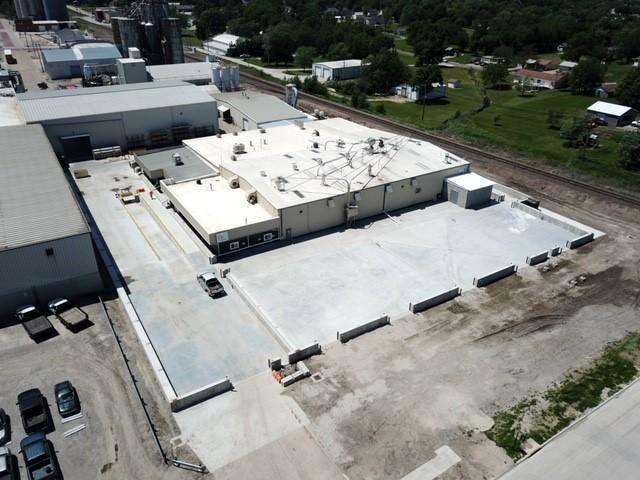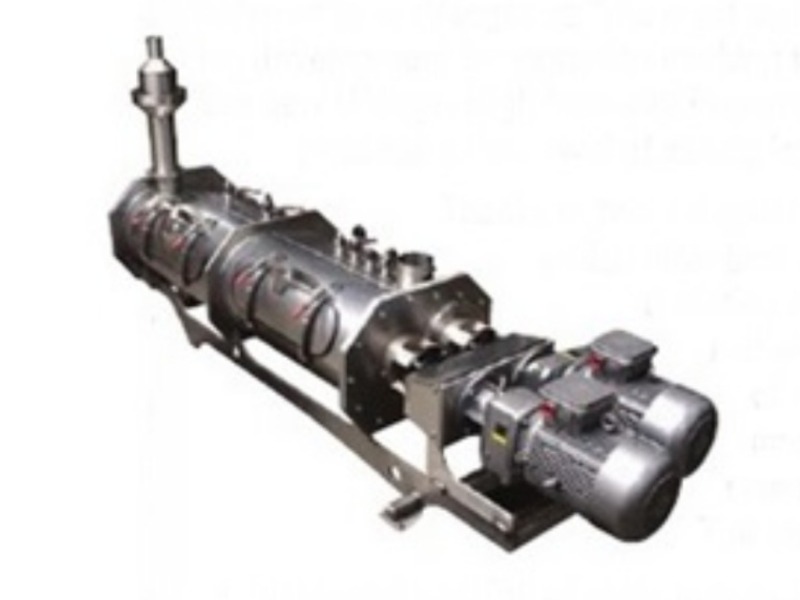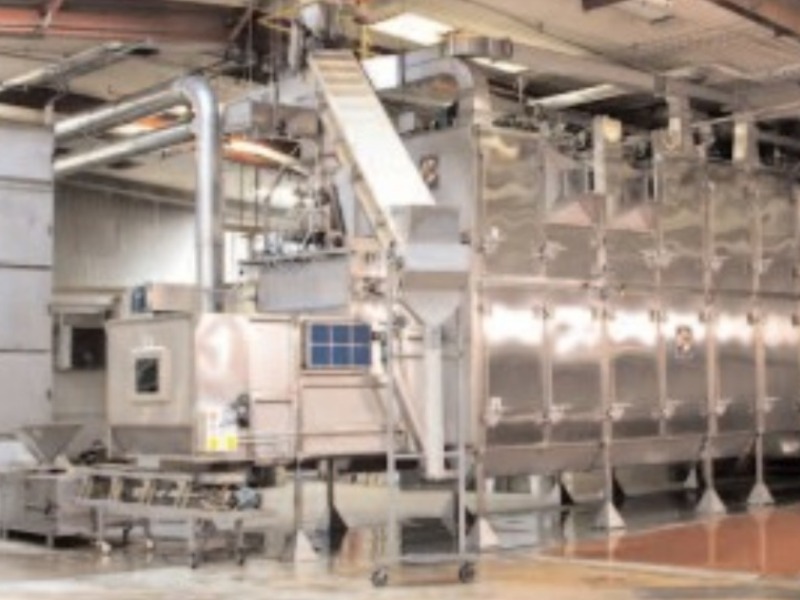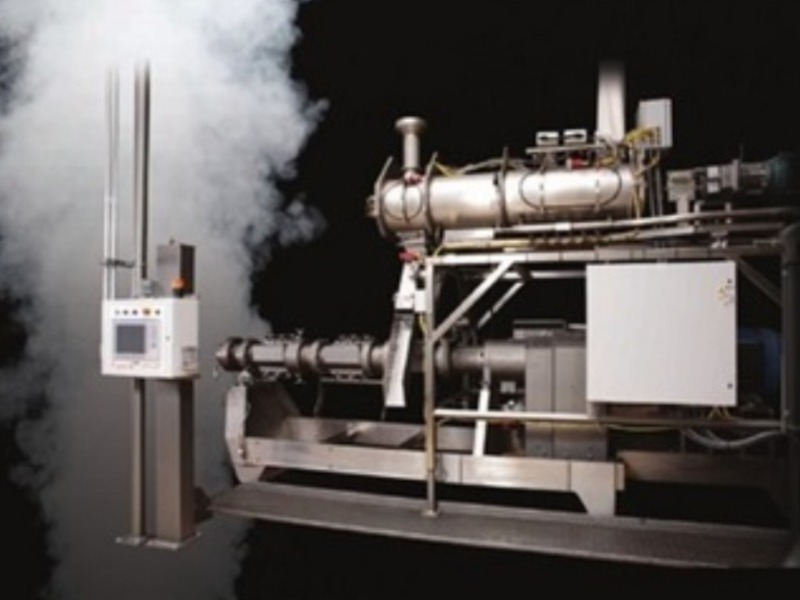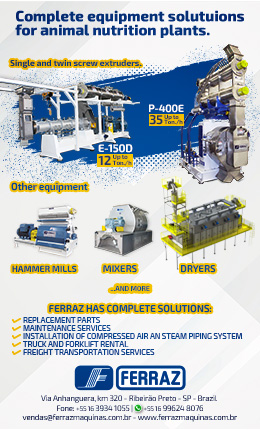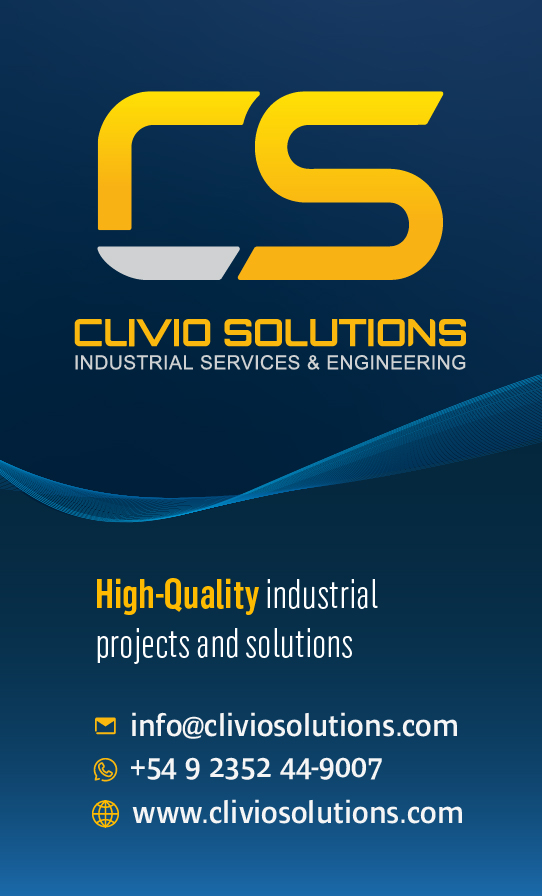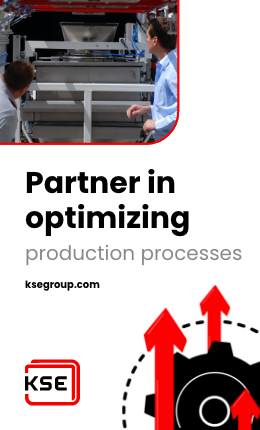Aerial photography reveals steady progress on the construction with the new concrete foundations, stem walls and floors providing a visual for what the perimeter of the new tech centre will look like. The new construction will make the facility more scalable and extend its lifespan long into the future.
The modernisation will include enhancing preventative measures for food safety, and the added square footage will make the centre more versatile. Expansion of the world-renowned Wenger Technical Centre in Sabetha, KS, USA, is keeping pace and hitting construction milestones, even in the face of obstacles created by the COVID-19 pandemic.
'The pandemic has not disrupted plans or impeded progress with the upgrade,' says Brend King, Vice President and Technical Centre Director. 'We have excellent momentum—construction of the new building is hitting every milestone while the Technical Centre is still fully operational inside.'
Work already was well underway on the $13 million renovation when COVID-19 abruptly forced businesses to shift operations protocols. The new building is being constructed around the old—the modernised, tension fabric structure will completely enclose the existing facade. That original steel structure then will be taken down, revealing capacity that is 40 percent larger and able to fit full-scale, commercial versions of nearly every piece of equipment Wenger manufactures.
The new structure is scheduled for completion in July and demolition of the old building will begin in August. While the pandemic did slow progress slightly at the beginning, Mr King says they've amended schedules when needed and have been recouping lost time as work moves along.
Meanwhile, testing and R&D projects continue inside the building, though protocols have been modified due to COVID-19. Wenger clients depend on the Technical Centre as a low-risk testing environment for new products and processes.
'Clients need us to continue functioning so they can meet their objectives, and we are committed to remain open and operational during this unpredictable time,' Mr King says. 'Our ingenuity drives us, and with persistence and flexibility we've found ways to work around the COVID-19 curveballs and stay open for business.'
For the time being, Wenger is unable to allow customers physically in the facility, but the team shares photos and video and provides detailed data sheets to show customers how the extruders and formulations are set up. They also send samples of the end product.
'Thankfully, this is temporary,' Mr King says. 'Customers have been very understanding and cooperative with these less-than-ideal, but necessary, changes to protocol. We're tremendously proud and grateful to have earned trust in the industry so that clients are comfortable letting us conduct runs on their behalf,' Mr King says. And in those instances where clients must be present, Wenger has shifted projects to a timeframe when restrictions are loosened.
Marketplace
Justin Moore, Extrusion Coordinator for Companion Animals and Aquafeed, and Topher Dohl, Extrusion Coordinator for Human Food and Industrial, have focused on scheduling and communication with customers to keep them apprised and meet everyone's needs.
Mr King says the shuffling of schedules has opened up time to focus on Wenger R&D projects, allowing the team to gather data to validate assumptions and theories. 'We've made some incremental steps on R&D processes we've been working on internally—and we look forward to sharing these exciting innovations.' It also has allowed Wenger to finish internal projects early to leave more time for client projects pushed to a later date.
The general contractor PMI Nebraska LLC, along with CL Construction of Lincoln, Neb., worked through difficult weather and muddy conditions this winter and spring to keep the project pushing forward. Wenger also is working with Pinnacle Electric, PCI Mechanical, Schenck Process, Scott Equipment and IPS on various aspects of the project.
As for COVID-19 precautions, Wenger is following public health expert advice and implementing measures related to social distancing, hand washing, and sanitising high-touch areas. They take temperatures in the morning and limit contact among employees.
'Safety is always a top priority at the Technical Centre, pandemic or not; and because many of our processes deal with food products, our standard safety practices match up well with public health guidelines for COVID-19,' Mr King says. 'It was easy to build social distancing measures onto the sound health and safety practices we already had in place.'
by Perendale Publishers
You could be interested: New research brief: Dental stick extrusion utilizing spray dried plasma (SDP)
About company

About company
With a little ingenuity and a lot of hard work, Joe and his brother, Louis Wenger, founded the Wenger Mixing Company in a small town in Kansas (USA) in 1935. They then designed a machine that mixed molasses with dry feed ingredients and thus they began to produce pellets in 1948.
The novel idea of the Wenger brothers created a worldwide industry. Seventy-five years later, Wenger Manufacturing, Inc. remains a family business committed to innovation in the extrusion market.
Today, Wenger offers a range of premium single-screw extruders, twin-screw extruders, dryers/coolers, coating systems, and control systems. A new generation of proud employees work for customer satisfaction in our multiple plants, in our world-class research and development center, and in sales and service offices around the world.
Wenger equipment is unmatched in quality. Perhaps even more important, it is the reputation we have built by having long-lasting partnerships with customers. Lasting because of our dedication, ingenuity, and responsiveness - and our promise to deliver on that commitment for generations to come.








